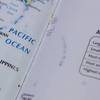Ten Most Frequently Observed Towing Vessel Deficiencies
The U.S. Coast Guard’s Towing Vessel National Center of Expertise (NCOE) recently conducted an analysis of all deficiencies recorded by CG field personnel while Examining “uninspected towing vessels” (UTV) under the Towing Vessel Bridging Program and through other activities.
The purpose of this analysis was to provide information and visibility on the most common UTV deficiencies list to share with UTV owner/operators in order to assist them in identifying and correcting common problems. In May of this year, they issued a comprehensive list that workboat operators – no matter what sector in which they operate – will find enormously helpful.
The most frequently observed deficiencies, including a brief explanation of the deficiency, applicable regulation, and some possible corrective actions are provided below. These deficiencies were determined by examination of data from September 2009 through February 2013 as recorded in the CG Marine Inspection Safety and Law Enforcement (MISLE) system.
- Remote Fuel Shut-off Valves (46 CFR 27.207)
Location, location, location. Any fuel line that supplies fuel directly to an engine or generator must have a shut-off valve that can be remotely-operated from outside the space and must be located as near as possible to the fuel source (fuel tank, day tank, etc.) or the main fuel distribution manifold. Other requirements include mechanical linkages be kept clean and lubricated, valve control must be labeled indicating direction and action to be taken (i.e., pull to operate) in one-inch letters. The most common issues were location of the valves (most were located at the end of the fixed piping adjacent to the engine served).
General Alarm (46 CFR 27.201)
General alarm installations are required to notify Persons in any accommodation, work space, and the engine room. Bells in the engineroom and any other space where background noise makes a general alarm bell hard to hear are required to include both audible and visual indicators (i.e., warning bell/siren and light). A placard with the inscription: “Attention General Alarm – When Alarm Sounds or Flashes Go to Your Station” is required to be posted in the vicinity of the general alarm bell/light. Missing placards, missing or malfunctioning visual indicators, as well as inoperable audible indicators are frequent deficiencies on towing vessels.
- Navigation Lights (46 CFR 25.10-3)
All vessels must have navigation lights in accordance with the International and Inland Navigation Rules
(Rules 22, 24 and Annex I), to include operable stern, masthead, sidelights and towing lights. In some instances the original or replacement installation of these lights was found to conflict with the International and Inland Navigation Rules, including the lack of “matte black” light screens (vessels over 65 feet per 33 CFR 84.09), improper vertical location, improper type approval of light, and proper arrangement of lights for area of intended operations. Operators should test their navigation lights prior to each voyage and inspect their navigation lights periodically, paying particular attention to the condition of the lenses, wattage and focal height of the bulbs. Household bulbs are not acceptable. Vessels should display the appropriate lights when aground in accordance with Rule 30 of the Nav Rules.
- Drug and Alcohol Testing (46 CRFR 4.06-15, 16.230, 16.401)
Marine employers shall establish a program for the random drug testing of crewmembers that are licensed or serve in safety sensitive positions, ensure alcohol testing is conducted within 2 hours of a Serious Marine Incident (32 hours for drugs), and provide an Employee Assistance Program for employees (including management). The inability to produce records supporting a testing system, expired testing kits or lack of written arrangements for testing, and lack of training or notification of EAP to employees were the most common issues.
- Fire Detection Control Panel (46 CFR 27.203)
The entire control panel’s required features must function properly: Power-available indicator light, audible alarm, visible indication of the zone (or zones) of the fire’s origin, means to silence the audible alarm and a circuit-fault detector test switch. Labels for all switches and indicators must be in place. Repeaters must be compatible with the detection system and contain approved or listed components. The most common issue was the inability to Produce documentation that the system’s installation was certified (by either a registered professional engineer, accepted classification society, or, if an equivalency has been granted by CG-CVC-1, a Level IV NICET). Owners/operators should be prepared to produce the document on board, demonstrate proper operation, and produce records pertaining to system testing in accordance with manufacturer instructions during each examination or boarding. Hiller Fire Safe units are not approved to be installed on board commercial vessels.
- Official/Unofficial Logbooks (47 CFR 80, 33 CFR 164.80, etc.)
Although current regulations do not directly require a towing vessel to maintain an official logbook, multiple regulations require that records of mandatory equipment tests, inspections, and operational details be recorded. Examples include Radio Log, logging of the testing of navigation safety equipment, inspection of rigging and towlines, General Alarm tests, failures of navigation equipment, etc. The most common cause of deficiencies is the failure to record required information.
- Vessel Compass (33 CFR 164.72)
Each towing vessel must be equipped with an illuminated card-type magnetic steering compass readable from the vessel’s main steering station, or alternatively if the vessel engages in towing exclusively on Western Rivers, an illuminated swing meter. Some common related deficiencies include absence of the equipment, malfunctioning lighting, etc. Owners/operators are encouraged to ensure the equipment is on board and functioning, and deviation tables are updated as necessary.
- Marine Sanitation Device (33 CFR 159.7)
Towing vessels with installed toilet facilities must not be operated without having aboard either a CG Approved Type I, Type II, or Type III Marine Sanitation Device. Specifically, the Coast Guard has detected a large number of deficiencies regarding Type II MSDs, which are required on vessels over 65 ft in length (vessels under 65 feet can have certain Type I MSDs). Some of the issues include lack of appropriate treatment chemicals, lack of operating instructions, and missing CG approval information/placard.
- Fire Extinguisher Brackets (46 CFR 162.028(g))
Under the approval requirements for marine type portable fire extinguishers, mounting brackets are to hold the extinguisher “securely in its stowage location on vessels or boats, and which is arranged to provide quick and positive release of the extinguisher for immediate use.” Some extinguishers go further and specifically state which brackets are acceptable for the purposes of meeting this requirement on their approval labels. It is noted, however, that many extinguishers arrive from the manufacturer or distributer with brackets that do not meet this expectation and must be changed out prior to use aboard a vessel. Operators are encouraged to read the approval labels and to seek further guidance from the manufacturer or the TVNCOE if necessary.
- Official Number Marking
Commercial vessels in excess of 5 net tons are required to be documented by the United States. The official number assigned by the document shall be permanently affixed to a major structural member of the vessel in the format of “No. XXXXXXX”. Surprisingly, either numbers are not affixed or are incorrect in format on many vessels. Operators are encouraged to ensure the correctly formatted number is welded, tapped, scribed, engraved or otherwise permanently affixed to a bulkhead, frame, beam, etc., on the vessel that can be readily observed.
The Coast Guard-generated list, developed and based upon vessel compliance with current regulations, does not address operations or excess equipment conditions that could pose a potential hazard (i.e., pressure vessel maintenance or condition). For more information about UTV examinations and how to prevent common deficiencies, including performing self exams, click: http://www.uscg.mil/tvncoe.
(As published in the August 2013 edition of Marine News - www.marinelink.com)











